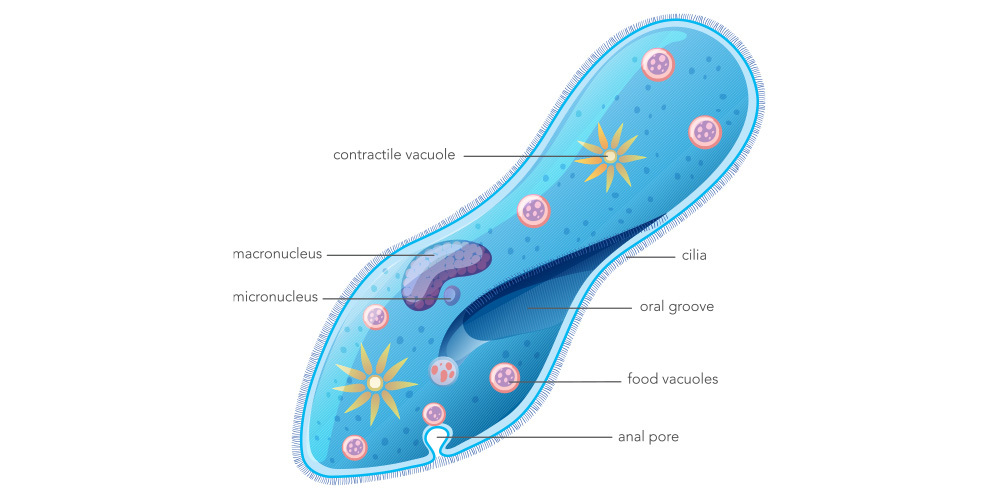Protozoa are largely defined by their method of locomotion, including flagella, cilia, and pseudopodia. While there has been considerable debate on the
classification of protozoa caused by their sheer diversity, in one system there are currently seven phyla recognized under the kingdom Protozoa: Euglenozoa,
Amoebozoa, Choanozoa sensu Cavalier-Smith, Loukozoa, Percolozoa, Microsporidia and Sulcozoa. Protozoa, like plants and animals, can be considered heterotrophs
or autotrophs. Autotrophs like Euglena are capable of producing their energy using photosynthesis, while heterotrophic protozoa consume food by either funneling
it through a mouth-like gullet or engulfing it with pseudopods, a form of phagocytosis. While protozoa reproduce mainly asexually, some protozoa are capable of
sexual reproduction. Protozoa with sexual capability include the pathogenic species Plasmodium falciparum, Toxoplasma gondii, Trypanosoma brucei, Giardia duodenalis
and Leishmania species.
Ciliophora, or ciliates, are a group of protists that utilize cilia for locomotion. Examples include Paramecium, Stentors, and Vorticella. Ciliates are widely
abundant in almost all environments where water can be found, and the cilia beat rhythmically in order to propel the organism. Many ciliates have trichocysts,
which are spear-like organelles that can be discharged to catch prey, anchor themselves, or for defense. Ciliates are also capable of sexual reproduction, and
utilize two nuclei unique to ciliates: a macronucleus for normal metabolic control and a separate micronucleus that undergoes meiosis. Examples of such ciliates
are Paramecium and Tetrahymena that likely employ meiotic recombination for repairing DNA damage acquired under stressful conditions.
The Amebozoa utilize pseudopodia and cytoplasmic flow to move in their environment. Entamoeba histolytica is the cause of amebic dysentery. Entamoeba histolytica
appears to be capable of meiosis.
Diagram of Protozoa
